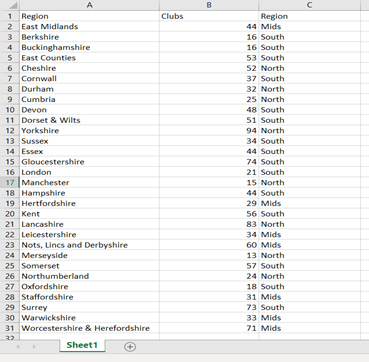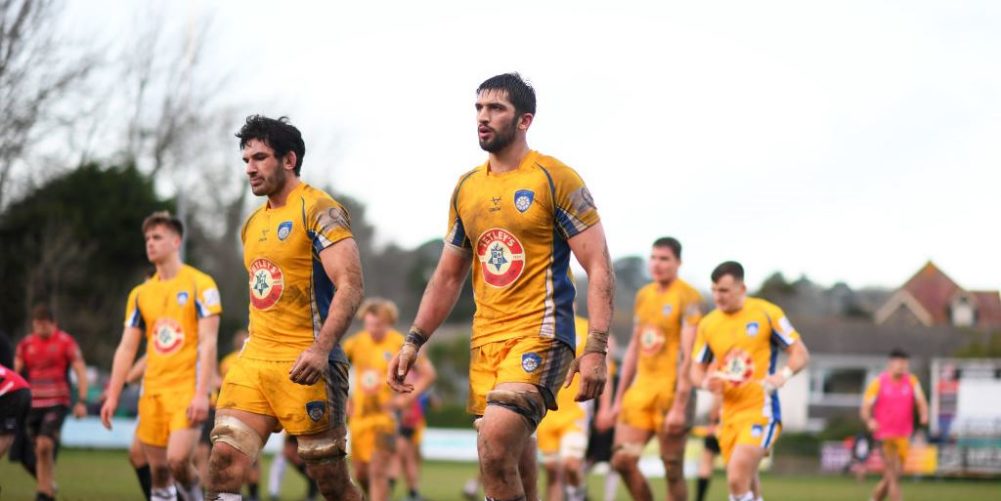By Ben Nurse
Rugby prides itself on being a game for all shapes and sizes and for every type of person. A game that transcends occupation and ethnicity to unite everyone under one mutual passion. Every region in England loves rugby equally but unfortunately rugby doesn’t love the regions equally.
The regional distribution of professional rugby in England is extremely unequal. In England’s top two leagues, formerly the two professional leagues before the RFU stopped funding the Championship, 13 out of the 23 teams are located in the South of England, 7/23 in the Midlands, leaving just 3/23 located in the North. This directly contradicts the franchise systems seen in New Zealand and Ireland in which one team represents a region, creating an equal dispersion. New Zealand just recently played a North vs South match which finished 38-35 after being 31-35 in the final minutes, showcasing the immense equilibrium and parity they have on regional talent. The regional disparity in clubs is not reflected in other areas, northern schools and Universities are consistently successful, in the University rankings 3 of the top 10 Uni’s are located in the North (Durham, Newcastle, Northumbria) and Sedbergh is arguably the best rugby school in the country, consistently producing England talent and going unbeaten for two years from 2018. In fact, i (painstakingly) found how many clubs are in each English county and made a spreadsheet to see how many total clubs are in each region. As you can see Yorkshire and Lancashire lead the country in total clubs with 94 and 83 respectively and with the 3rd most clubs being Gloucestershire with 74. Therefore, if anyone tries to tell you that rugby is more popular or dense in the Midlands or South they are wildly incorrect.

Although the south has more total clubs, by my calculation there are 17 counties in the South and 11 in the North. What is surprising is how little total clubs are in the Midlands, although the regions of Leicestershire and Northamptonshire are rugby hot-beds the ratio of total clubs to professional clubs is disproportionate.
| Region | Professional Clubs | Total Clubs | Percentage |
| North | 3 | c.338 | 0.9% |
| Midlands | 7 | c.269 | 2.6% |
| South | 13 | c.642 | 2% |
Of England’s initial 28-man 2021 Six Nations squad just 3 of the 28 were born in the North of England (Farrell, Ford, Wilson). In fact, of England’s 2019 World Cup squad of 31 there was again just 3/31 born in the North. Here I am reminded of the paradox of the chicken and the egg, is it that there is less professional northern clubs because there is less northern-born players or is that there less northern-born players because there is less northern clubs?
The regional disparity is perfectly demonstrated in the academy set up in England. The country is split up into 14 catchment areas in which every area falls into just one catchment, these catchments are the 12 premiership clubs plus Saracens and Yorkshire Carnegie. Carnegie who were formerly an established Premiership club under the guise of Leeds Tykes and then Leeds Carnegie and have now been removed from the Championship for failing to pay their debts and have had their academy funding from the RFU pulled and their academy disbanded. This has created a huge chasm in the English academy system as the huge catchment of Yorkshire is now without a professional academy. This is a huge issue as the list of current Premiership players from Yorkshire is huge: Zach Mercer, Jacob Umaga, Danny Care, Matt Postlethwaite etc. not to mention the England legends from Yorkshire like Jason Robinson, Lawrence Dallaglio and Brian Moore. Now that Carnegie have disbanded their academy, the biggest academy in Yorkshire is Doncaster Knights who operate on a shoe-string budget with no funding from the RFU. This means that a rising young talent in the North might have to travel a long way for academy coaching and may end up being lost to the game. A perfect example of this is England international Mark Wilson who is known as a product of Newcastle’s academy but actually didn’t grow up anywhere near Newcastle, he was born in Kendal in Cumbria, a two hours’ drive from Newcastle.
Another heart-breaking story is the one of Orrell RUFC, a famous club in Wigan that formerly played in the first division. Orrell simply couldn’t survive the turn of professionalism and a team that was stacked with great players suddenly couldn’t afford to pay them. The club went into administration, the players were sold and even the training ground and clubhouse were sold as Orrell accepted amateurism and allowed themselves to freefall through the leagues. Orrell was once a hub of talent, producing players such as Dewi Morris, Austin Healy, Nick Easter and Dan Luger but now is just an amateur club with fond memories of the top division. Some may recall a similar thing happening to Richmond although they managed to rebuild and are now in the English Championship, the 2nd tier, while Orrell are currently in the 7th tier.
And i already know what everyone is already typing out in the comments of this post. ‘Its because of Rugby League’. Well actually there is 58,000 registered rugby league players in England and there are about 2,000,000 registered football players in England and an estimated 11,000,000 total players including Sunday league. As a percentage of the population of England, 3.5% of people play football and 0.1% play rugby league. So in a conversation about rugby union competing for participation in England, rugby league is not a factor. If London can compete with 12 professional football clubs including Chelsea, Arsenal and Tottenham to produce 3 Premiership rugby clubs then Yorkshire can compete with rugby league to produce 1 Premiership rugby club.
This week as i’m writing this, RugbyInsideLine shared this map on Twitter of the geographical radiuses surrounding Premiership clubs which reinforces my point.
The comments seem to focus on the gaps in Norfolk and Southampton, glossing over the gaping holes in Yorkshire, Lancashire and Cumbria. They then posted the same map with the Championship clubs added and the gaps in the North are immediately evident. Furthermore, while there are open holes in the North, numerous areas in the Midlands and the South have 2 or 3 clubs overlapping.
In terms of a solution to this issue there is no obvious solution, the only obvious thing is that northern clubs clearly lack finances and resources and need to be supported by the RFU or the RFU risks further and permanently alienating the North. Clubs that rise from the lower levels to the Premiership success don’t do so by coincidence. Exeter and Bristol found success due to significant financial injection and the same is currently in progress at Ealing. In 2020 two northern clubs, Rotherham and Yorkshire, were both relegated after financial issues, demonstrating an obvious trend. Obviously the pandemic has hit everyone hard financially and the RFU are no exception, this contributed to their decision to cut funding to Yorkshire Carnegie. However the retention of the North should be seen by the RFU as an issue of upmost priority. Recall my earlier reference to the 2019 England World squad with just 3/31 born in the North, what if there was an equal split of players between the North and South 15:16 assuming that an extra club in the North would provide more England internationals that would have previously been lost to the game due to lack of resources or alienation. For every Mark Wilson in this world there is 3 Cumbrian’s or Yorkshiremen who gave up the sport or turned to league. We all know how well England did in 2019 but in this hypothetical scenario they could become a consistent super power. The South has long been a stronghold of rugby union but this doesn’t mean that the North has to be neglected. It is not a coincidence that there is 4 West Country clubs in the Premiership and 0 from Yorkshire even though there is 94 total clubs in Yorkshire and just 48 in Devon and 57 in Somerset. Not to mention the 140 total clubs in Cumbria, Lancashire and Durham for 0 in the top two English leagues.

The English clubs form a wonky line around the Welsh border. Proximity to Wales could be an historical factor influencing the spread of clubs.
LikeLike